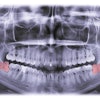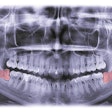
The incidence of infective endocarditis among dental patients in Olmsted County, MN, did not increase after new guidelines called for giving antibiotics before dental procedures only to those at greatest risk of complications, according to independent research published in Circulation (June 11, 2012).
Patients with a heart weakened by certain congenital defects and acquired conditions, including those with prosthetic heart valves, can be more susceptible to infective endocarditis, noted the study authors, from the Mayo Clinic and the University of Vermont. Although rare, it can occur when bacteria -- such as viridans group streptococci (VGS) -- enter the bloodstream through breaks in periodontal tissue during invasive dental procedures or oral surgery, and it can cause death if untreated. People with normal heart valves develop the infection less often.
“This study should reduce some fears.”
— Daniel DeSimone, MD, Mayo Clinic
To help prevent against these infections, prior to 2007, preventive antibiotics were given to a broad number of people, including those with many types of congenital heart defects or acquired cardiac conditions. Antibiotics were also given for a wider range of procedures, including operations involving the oral cavity, throat, and gastrointestinal, genital, and urinary tracts, the researchers noted.
But in 2007, the American Heart Association (AHA) changed its guidelines, recommending patients take antibiotics before invasive dental procedures only if they are at risk of complications from infective endocarditis. This includes patients with artificial heart valves, transplanted hearts with abnormal heart valve function, and a history of previous infective endocarditis, as well as people born with specific heart defects.
"We were giving preventive antibiotics like we were treating an entire iceberg, when we only needed to treat the very tip of that iceberg," said lead author Daniel DeSimone, MD, an internal medicine resident at the Mayo Clinic, in an AHA press release. "Millions of people once getting antibiotics now are not."
More research needed
Now in the first U.S. study examining VGS-related infective endocarditis rates after the guidelines changed, Dr. DeSimone and colleagues found a slight decline in the number of patients diagnosed.
To compare infective endocarditis rates, they analyzed local hospital discharge records in the Rochester Epidemiology Project and national rates using the Nationwide Inpatient Sample. Olmsted County was used because of its unique medical records-linkage system that encompasses all residents of the county, according to the study authors.
They found that from January 1, 1999, to December 31, 2010, 22 patients in Olmsted County were diagnosed with the heart infection. These patients represent two to three of every 100,000 people in the U.S. before the updated guidelines, and one of every 100,000 after the updated guidelines, the researchers noted. The percentage of Olmsted County dentists following the new association guidelines represented the percentage of dentists using them nationally, the researchers said.
The national annual infective endocarditis diagnosis rates showed no increase, ranging from:
- 15,300 to 17,400 in 1999-2006 (before the updated guideline)
- 14,700 to 15,500 in 2007-2009 (after the updated guideline)
"These findings are reassuring, but additional studies are needed to further support our findings," Dr. DeSimone said.
There's still a concern among many healthcare providers over whether some people are being left at risk of getting a potentially lethal infection from a dental cleaning or tooth extraction, he added.
Still, "this study should reduce some fears," he said. "It will allow dentists to become more comfortable when they tell a patient, 'You've been getting this antibiotic for years. Now, it's not recommended anymore, and here is data showing you why.' "
Among other limitations, the lack of diversity in Olmstead County means these results may not hold true for non-Caucasian populations, the researchers noted.



















